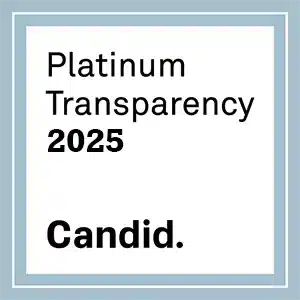TechForce and Ariz. Science Center challenges and inspires next generation of techs
Students demonstrate STEM skills in after-school program that emphasizes automotive-related interests.
Scottsdale, Ariz. — January 18, 2018 — A key to helping solve the qualified technician shortage in the automotive and diesel vehicle industry was demonstrated recently at a TechForce Foundation and Arizona Science Center event (For background: Watch This Video).
Held at CREATE in the Arizona Science Center, the event showcased projects created by Phoenix’s Estrella Middle School students who participated in a unique,12-week after-school program called “CREATE U/TechForce Foundation Transportation Challenge.”
The concept for the Challenge was created by Greg Settle, TechForce Director of National Initiatives and Tim Dwyer, Education Specialist at ConsuLab Educatech Inc. Under Dwyer’s direction, industry volunteers* from the ASE Training Manager’s Council (ATMC) then built out specific “challenge scenarios” that the students were able to choose from and execute. The goal was to help students solve real-world technical challenges that have been faced in the transportation industry. The Challenge concluded with students demonstrating their projects to their parents and a number of special guests from the community and the transportation industry.
“The Transportation Challenge is an initiative directly related to our FutureTech Success® Campaign, said Jennifer Maher, CEO/Executive Director of TechForce and speaker at the event. “It speaks to our overarching purpose of connecting with and encouraging students to consider a transportation career by providing them with the tools and experiences to recognize and foster their ‘tactile intelligence.’
“If we’re going to solve the qualified technician shortage problem, we need to work at the grassroots level offering tangible and relevant experiences to adolescents as they start to think about their careers,” said Maher. “The Transportation Challenge had students working in teams learning real-life tasks — from lessons on structural engineering and material compatibility to the chemistry of atmospheric air and how it affects an engine — that usually are not offered in a traditional classroom.”
Driving home the point, Settle said, “This program focused on students being able to use their STEM (Science, Technology, Engineering, and Mathematics) skills to work on applicable, vehicle-related interests. This early experience may prove to be the first step for students to pursue one of many rewarding transportation careers. I don’t know if every one of these students will pursue a transportation career, but I do know that after this experience they are a step closer if they choose to be.”
Tim Dwyer, who attended the event, concurred. “We feel we have to go back into the middle school and put self-discovery at the level where they’ll hopefully spark an interest in a career in the transportation industry and help solve some of the [tech shortage] problems we’re having right now.”
Leading up to the event, three student teams utilized their STEM skills by spending two-hours each week at CREATE at the Arizona Science Center where they had access to CNC machines, laser cutters, 3D printers and an entire woodworking shop to bring their transportation prototype to life. Industry experts served as coaches to provide real-world insight and training to the students.
Each team chose a challenge out of the five created by the ATMC task force. One team was challenged with a crash test in which the team was tasked with engineering a two-axle vehicle that would protect an egg in the event of a frontal impact. Next, a team was challenged with engineering a working turbocharger for the compression of intake air into an internal combustion engine. Finally, a team was challenged with building a planetary gear set utilizing a fixed speed electric motor that would move a fixed weight a certain distance.
To meet these challenges, Dwyer said these young people turned from being a group of individuals into team members who relied on one another. His sentiment was echoed by Michael Medalla, Manager of the Toyota USA Foundation and guest attendee, who added the long view, “The students working together as a team and collaborating is so important when talking about career readiness and working in industry.” In this environment, he added, “Nobody works by themselves.”
Medalla’s point is backed up by teachers on the ground. Eric Rogers, one of the Estrella Middle School teachers involved in the Challenge said being able to problem solve, exercise divergent thinking and finding multiple solutions to a problem are key learning points for the students. “Being able to collaborate and share, and then realize their idea might get a better contribution from somebody else that improves it…” is how Rogers explained the power of working together for a common cause.
Michael Romano, Universal Technical Institute’s (UTI) Avondale Campus President and guest attendee, minces no words when he expresses his concern about how young people don’t have the opportunity to be exposed to a greater variety of things. “Most students, unfortunately, are relegated to the classroom. By bringing them to where they can actually put their hands on a product to experiment and try different things is key to the future of the country.”
Moreover, Romano said that even if these students don’t wind up in a profession using their hands, this kind of experience will help them be “better workers, better producers and have a more well-rounded education as a whole.”
Of course if they do pursue a transportation career, another guest attendee said there should be a place for them. “There’s going to be a skills gap problem for 10 years,” said Larry Cox, Vice President of Culture at Sunstate Equipment Co. He attributes this gap to all of the baby boomers who are retiring. “We are constantly looking for technicians and good employees.”
The good news doesn’t end there according to Cox whose company has over 1,600 employees, 400 of whom are technicians working in 10 Southwestern states. “You can come in at a reasonable, livable wage and as you continue to grow and your skills improve, your compensation will grow quite quickly.” To emphasize the point, he said, “The average pay [for Sunstate’s 400 technicians] is over $70,000.”
Transportation Challenge Co-Creator Dwyer concurred that the money is there for good employees who are technologically savvy but emphasized earning potential is also tied to how progressive their company is. And he cautioned that young people need to come in with the right expectations. “When salary is mentioned, some only hear that…and I have found if you work for the money, you will not be satisfied. If you learn the skills, the money will come!”
“This [Transportation Challenge] program not only gives youth opportunities to invent, design, and fabricate materials for actual use, but opens their eyes to the opportunities they may have in the workforce beyond going to college,” said Chevy Humphrey, the Hazel A. Hare President and CEO of the Arizona Science Center. “Every child has a path and for some, college isn’t the best fit. But when presented an opportunity to gain a high level of training to become a mobility technician and fill much needed workforce positions, our youth see alternate ways to become successful and utilize their talents and passion.”
In addition, two high profile local guests attended the event: Ryan Anderson, Principal, Estrella Middle School and Cynthia Spell Tweh, Deputy Director, City of Phoenix Community and Economic Development Department.
The Transportation Challenge program was underwritten by General Motors, Nissan North America, Advance Auto Parts, Snap-on and Universal Technical Institute. It will continue at CREATE at the Arizona Science Center in 2018 with new teams and new projects to be announced at a later date.
*ATMC Task Force members: Tim Dwyer, ConsuLab; Aaron Nieboer, Broken Myth Studios; Bryce Peterson, Broken Myth Studios/UTI; Maureen Haskell-Wodnick, Penske Truck Leasing; Jill Trotta, RepairPal; and Loren York, Sunstate Equipment Company
PHOTO: https://adobe.ly/2FNZmjs
Photo Caption: Three Estrella Middle School (Phoenix) students, who may represent the next generation of techs, demonstrate their planetary gear set project at the recent TechForce Foundation/Arizona Science Center "Transportation Challenge.”
About TechForce Foundation
TechForce Foundation is a nonprofit, 501(c)(3) with the mission to champion students to and through their education and into careers as professional technicians. The Foundation distributes more than $1.5 million in scholarships and grants annually, thanks to its generous corporate sponsors and donors, and is spearheading FutureTech Success®, the industry-wide initiative to help encourage and support more young people to pursue the vehicle technician profession. For more information, visit www.techforce.org.
About Arizona Science Center
The mission of Arizona Science Center is to inspire, educate and engage curious minds through science. The Center, located at 600 E. Washington Street in downtown Phoenix, features more than 300 hands-on exhibits, live demonstrations, the state-of- the-art Dorrance Planetarium and the five-story screen Irene P. Flinn Theater. CREATE at Arizona Science Center®, adjacent to the main building, is the newest addition. This 6,500 square foot community maker space provides workshops, including 3D printing, laser cutting, microcontrollers, woodworking and sewing. The Center also offers various programs for all ages. Programs include Camp Innovation, Teen Science Scene, Professional Development and Learning for Educators, and adults-only Science With A Twist. For further details, please visit azscience.org.
Media Contact:
Jennifer Maher, Executive Director
jmaher@techforce.org
602-550- 0371






